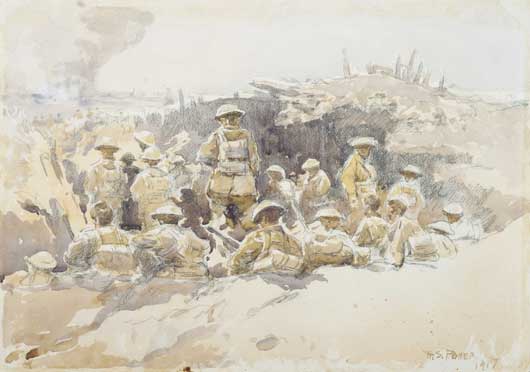Passchendaele The Last Gasp, 1917
The Battle in Brief
By 5 October 1917, the British attempt to push back the German line east of Ypres in a series of ‘bite and hold’ operations had met with some success. However, this had come at a great cost. While the weather held, the British had been able to bring up supplies and the all-important artillery. Artillery was the essential ingredient of the ‘bite and hold’ tactics for if the ‘creeping barrages’ could not protect the advancing British infantry they would be at the mercy of the enemy machine gunners. After 4 October 1917 the rain poured down and the battlefield, and all the approaches to it, became a sea of mud. To successfully bring up heavy war equipment under these conditions proved impossible. However, Field Marshal Sir Douglas Haig, the British commander-in-chief ordered the battle to continue.
On 9 October 1917, British divisions, with the Australians in support, attacked in terrible conditions towards Passchendaele village. In the mud and rain the effort proved futile but the high command thought that enough ground had been gained to order a fresh assault on 12 October. Spearheading this attack were the Australian Third Division and the New Zealand Division, with the Australian Fourth Division in support. As predicted, the shells of the support bombardment mostly exploded harmlessly in the mud and little cover was available from that source. Men had to press forward in the quagmire against the German ‘pillboxes’ armed only with grenades, rifles and light machine guns.
A few Australians reached the edge of Passchendaele. However, they were not strong enough to hold the ground and were eventually forced to fall back and give up their gains. Australian losses for 12 October were 3,000 casualties for the Third Division and 1,000 for the Fourth Division for no gain. The Canadian Corps moved into the battle area on 18 October to replace the exhausted Australians. The Canadians, in five attacks between 26 October and 10 November, captured Passchendaele, and with their success the Third Battle of Ypres ended.
Location
Media







